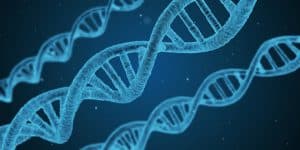The utility of next generation sequencing in drug development
pharmafile | November 3, 2010 | Feature | Research and Development | Dr Cheng Eng Ang, Illumina, Source BioScience, drug development, genomics, human genome, next generation sequencing
Drug development studies are extremely expensive, costing many millions of pounds and taking up to 12 years to bring a drug to market.
This has been due to the limitations of previous technologies including genomic methods, which have been time consuming. Technology has now caught up
With the advent of next generation sequencing (NGS), the human genome can now be sequenced in weeks instead of years and in experienced hands, can provide an extremely valuable tool for drug development studies.
Utilising this technology, early target identification can be hastened, new genetic lesions associated with disease can be found, and overall development times associated with therapeutics and diagnostics to newly identified targets can be significantly shortened.
However, such cutting edge technology comes at a price, and significant investment of many hundreds of thousands of pounds is required.
Recently, Illumina launched their HiSeq 2000 platform. This groundbreaking platform enables the generation of 200GB of data in 10 days, which can significantly reduce project timelines. The upfront investment required for hardware and infrastructure mean smaller pharma and biotechs may find this a stumbling block. The good news is that these studies can be outsourced to competent service providers.
Careful selection of NGS service providers is important, and criteria will include partners with an accreditation for excellence in next generation sequencing with many years of experience in the genomics field. This expertise is essential to help shape projects – providing the most streamlined study protocols to answer the important questions, thus enables the study to proceed down the drug or diagnostic development chain efficiently. Without this expertise, there is the potential for targets to be mis-identified or their importance to go unrecognised, especially if data from NGS projects is not handled or analysed in the appropriate way.
It is also important that the partner has the expertise to handle samples that may have been derived from archived blocks which are irreplaceable, or clinical samples that, ethically, may not be available again.
High throughput sequencing technology will no doubt be taking a higher profile role in drug development projects, not only by reducing development times but also increasing numbers of targets identified – as well as identifying potential new drug candidates. Together with the capability to multiplex, both in terms of the analysis of multiple samples – and also multiple gene targets to be analysed in a single study – this technology has much to offer in experienced hands.
Illumina is already addressing the need for multi-sample analysis with the development of a string of validated reagent kits that allow multiplexed sequencing to be fully automated. Oligonucleotide kits for multiplexing are available, which means that multiple samples can be analysed together. Currently up to 96 individually indexed samples can be analysed in one flow cell.
NGS technology is also flexible. It is not always cost-effective to sequence the entire genome. Use of new enrichment techniques prior to sequencing means that, for example, only exons or specific targeted regions of interest need to be sequenced. This approach, coupled with the ability to multiplex samples for sequencing is being used increasingly to identify mutations and can be a quicker alternative, as well as being more cost-effective than whole genome sequencing.
Already, NGS is being used to identify multiple genes associated with breast cancer susceptibility.
One group in Australia is using whole exome sequencing on Illumina to look at BRCA genes and association with susceptibility to breast and ovarian cancers.
The value of this is already emerging as studies on targeted therapies illustrate the importance of mutations in more than one gene impacting on treatment; e.g., mutations in both KRAS and BRAF in colorectal cancer.
It is clear that this is an area of profound growth, for which NGS methodology is well placed to be extremely useful.
However, performing the sequencing is only one part of the puzzle.
Comprehensive bioinformatics capabilities are required to make sense of the vast amount of data generated, and experienced bioinformatics analysts are essential to unlocking the information contained in the data.
Advanced bioinformatics analysis of the sequencing data will provide information on the mutations detected. Some of these mutations may be responsible for patient response to treatment.
There is also a number of leading bioinformatics software tools available for additional downstream analysis.
Next generation sequencing is therefore invaluable not only for drug development studies but also for patient stratification for clinical trials.
With the growing need for companion diagnostics to aid new drug launches and provide patients with the most appropriate treatment, technologies such as NGS have an important place in the field especially in conjunction with expert pathology and tissue based studies.
This unique offering further aids drug development studies, providing an evolution pathway from pathology to genetic analysis which can encompass a range of therapeutic areas.
Dr Cheng Eng Ang is head of next generation sequencing at Source BioScience.
Related Content

AstraZeneca’s Alexion partners with Pfizer for rare disease therapies
Alexion, AstraZeneca’s Rare Disease division, has announced that it has entered a definitive purchase and …

Lonza to acquire Synaffix to strengthen ADC development
Global manufacturer for the pharmaceutical, biotech and nutraceutical markets, Lonza has announced that it has …

Merck invests €35m in biosafety testing in Scotland
Merck has announced that it has invested €35m in biosafety testing at its sites in …








